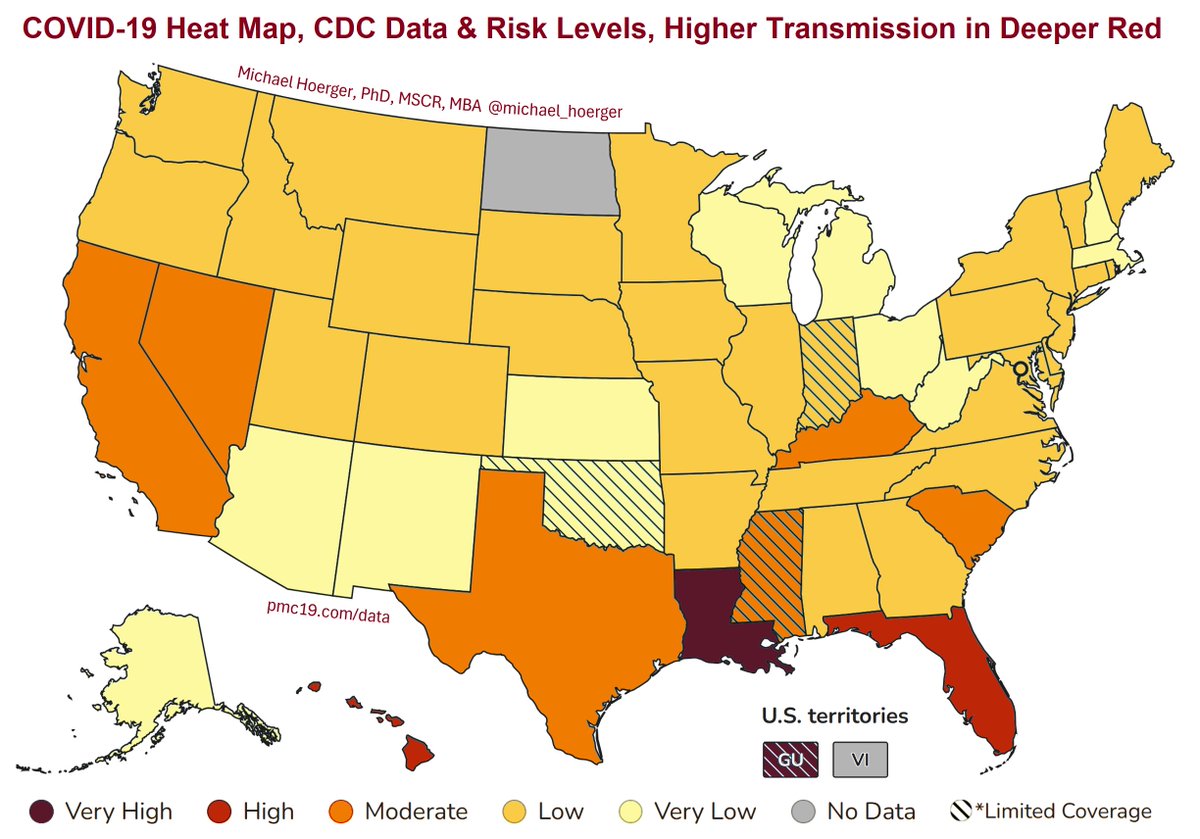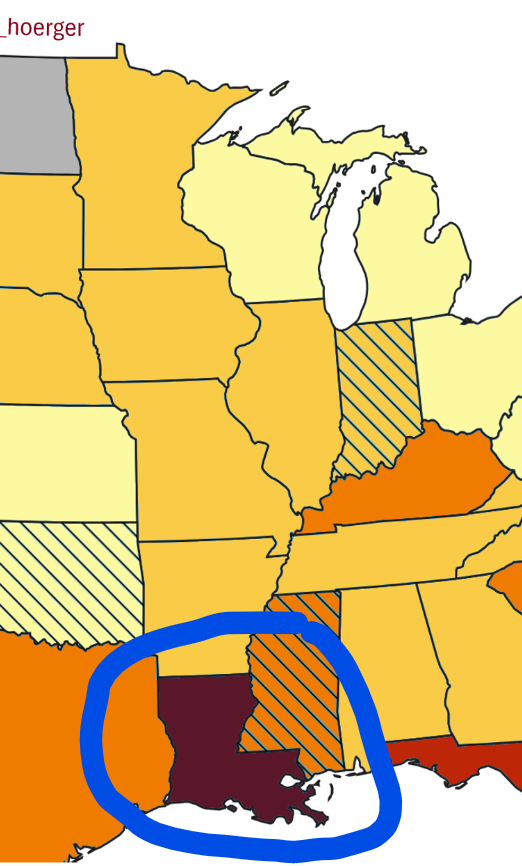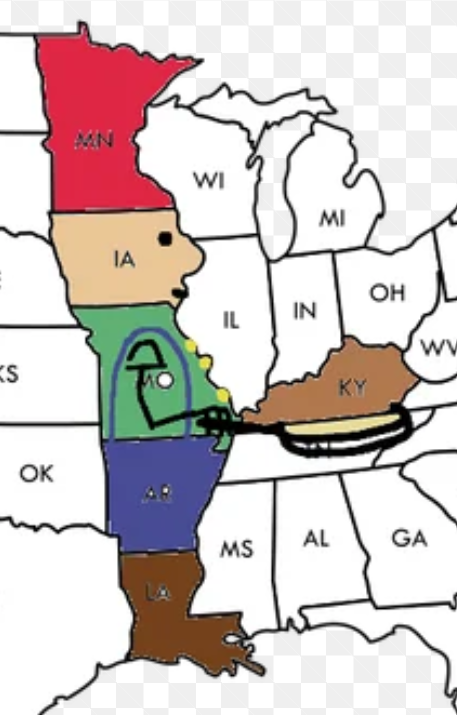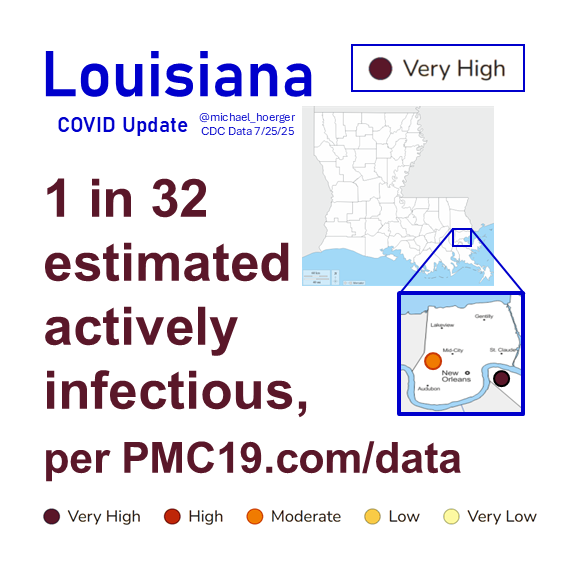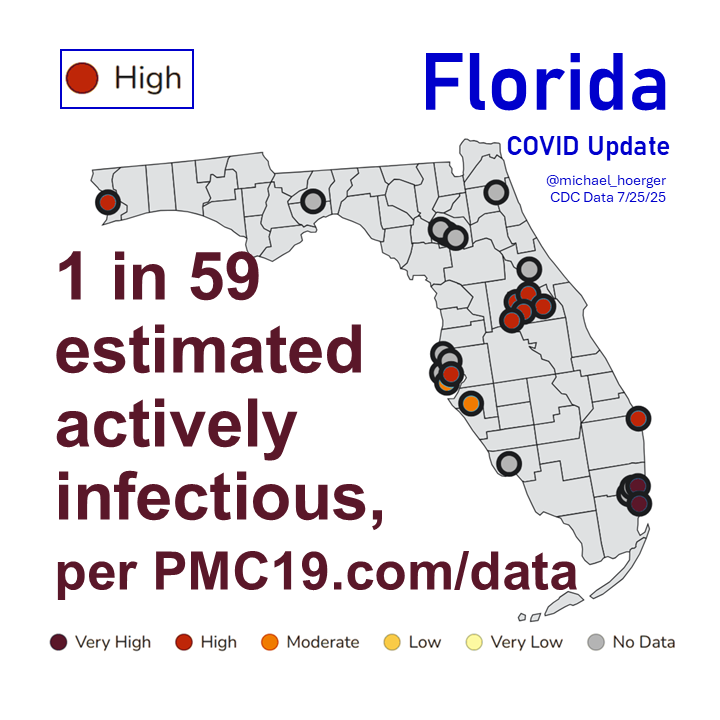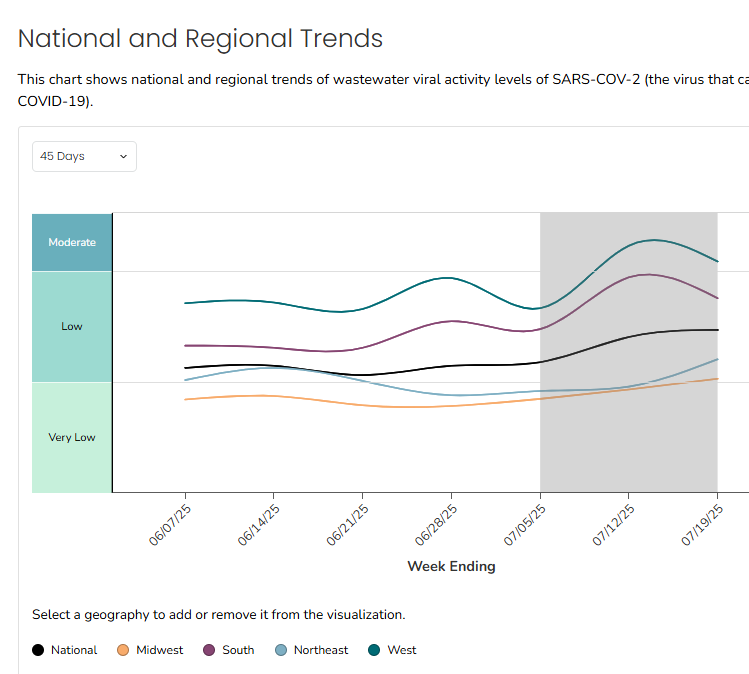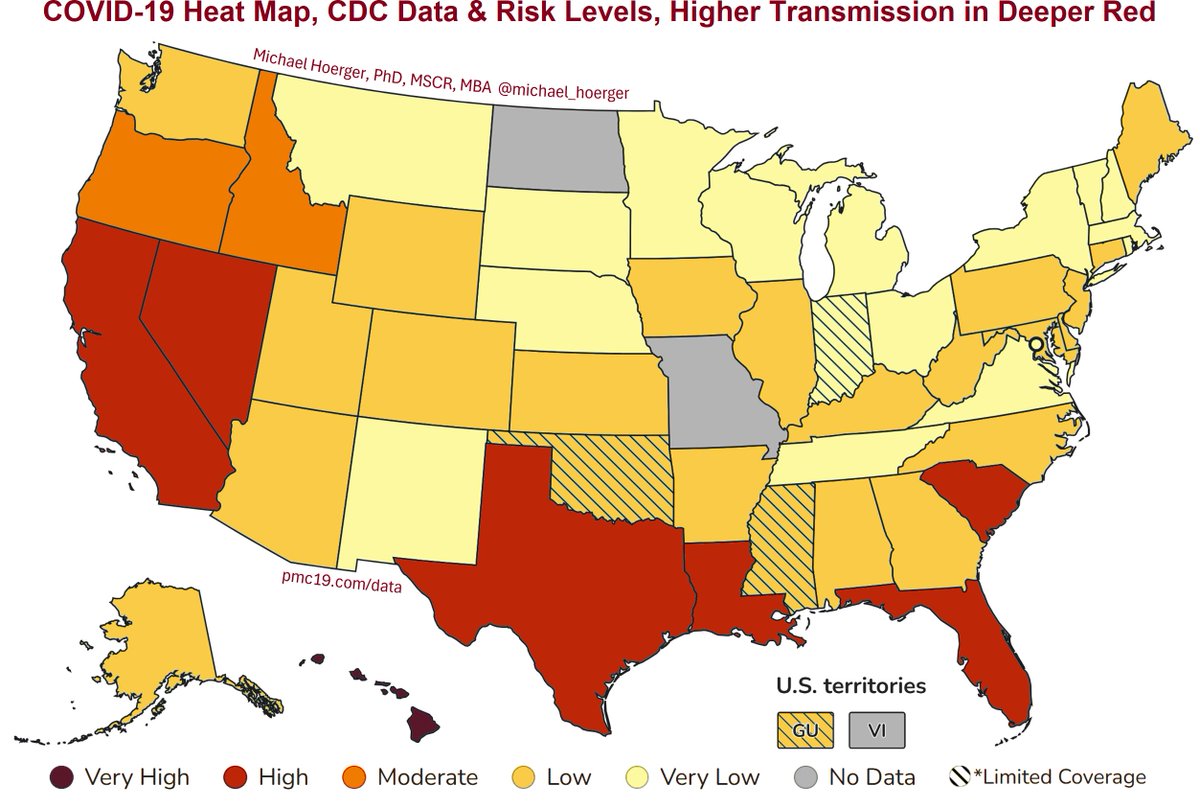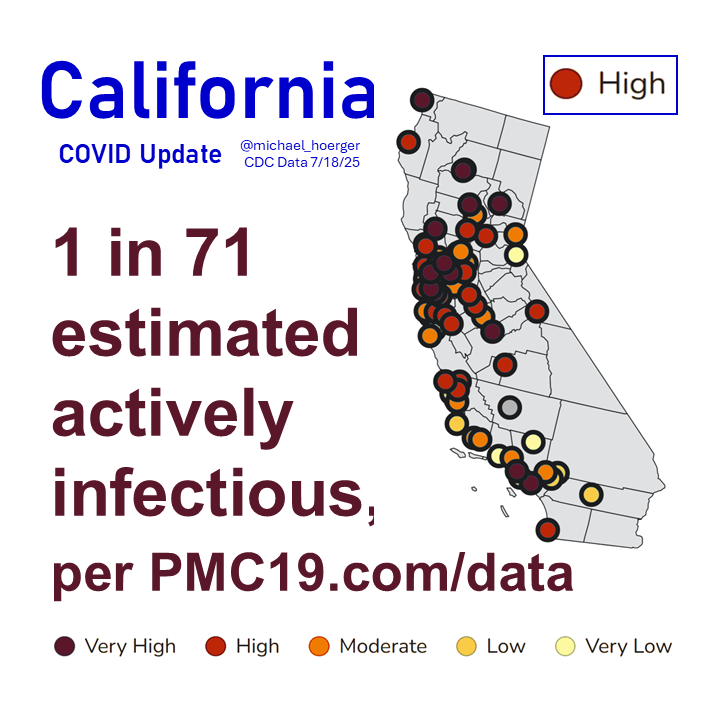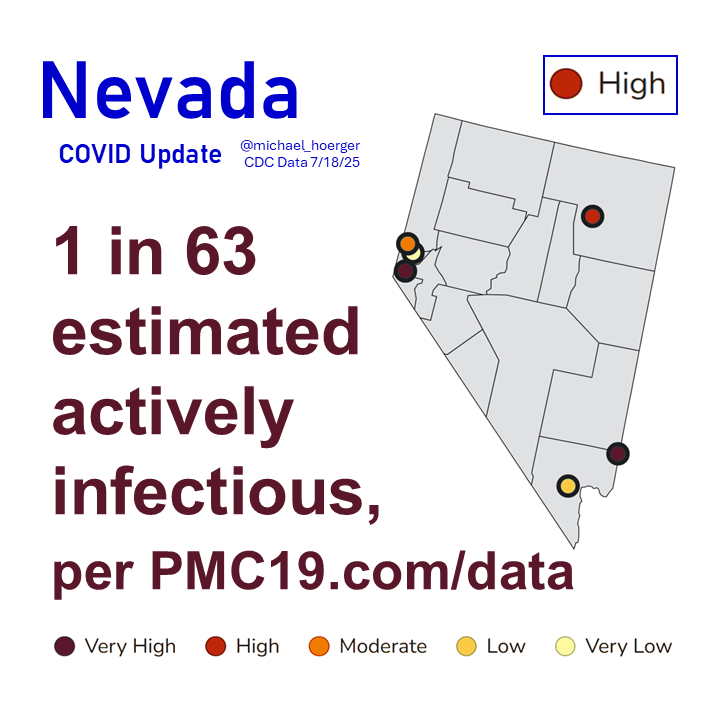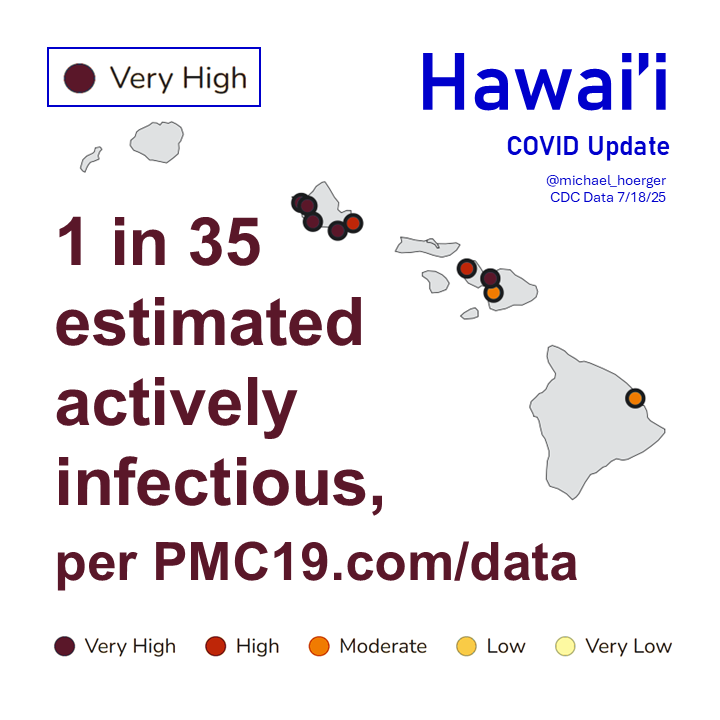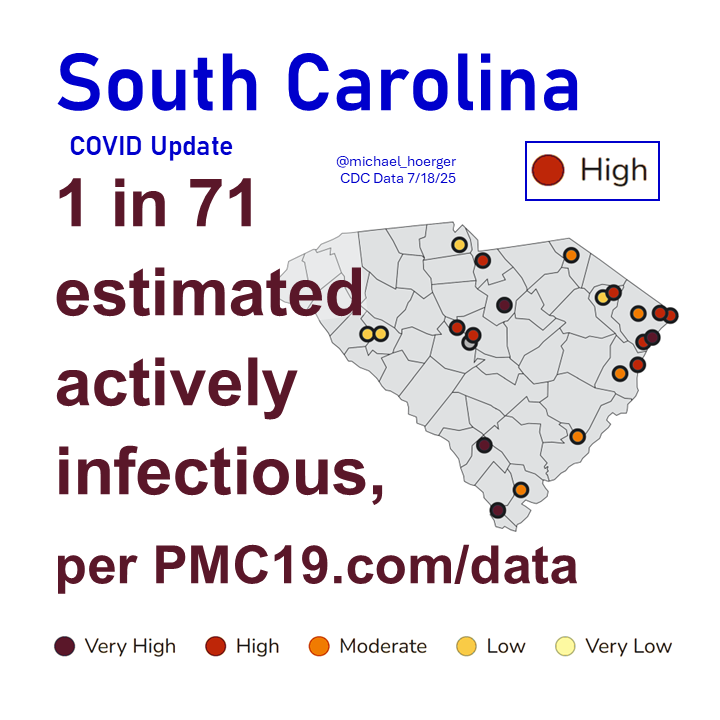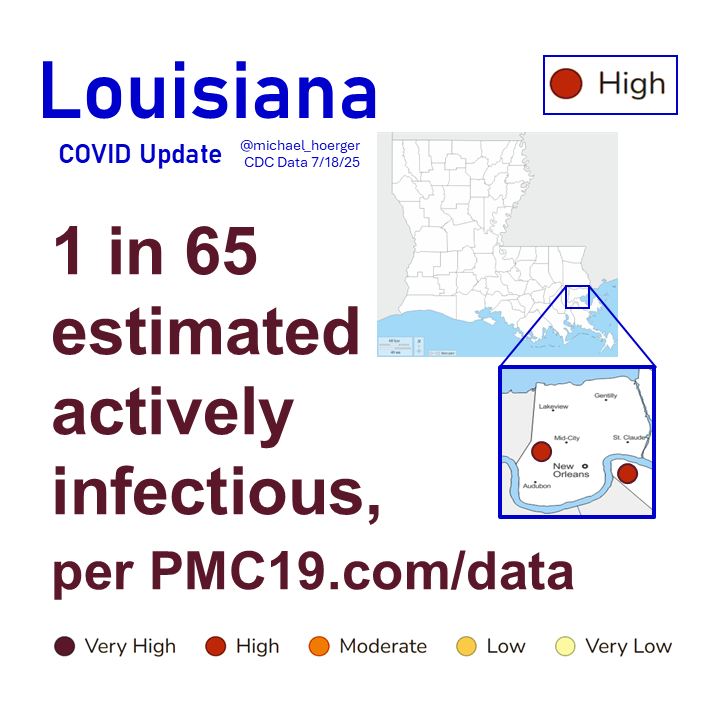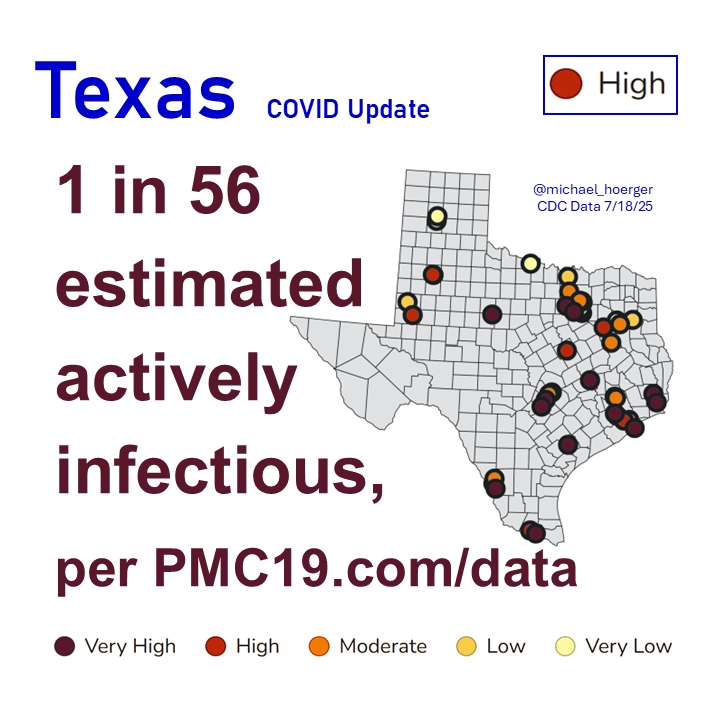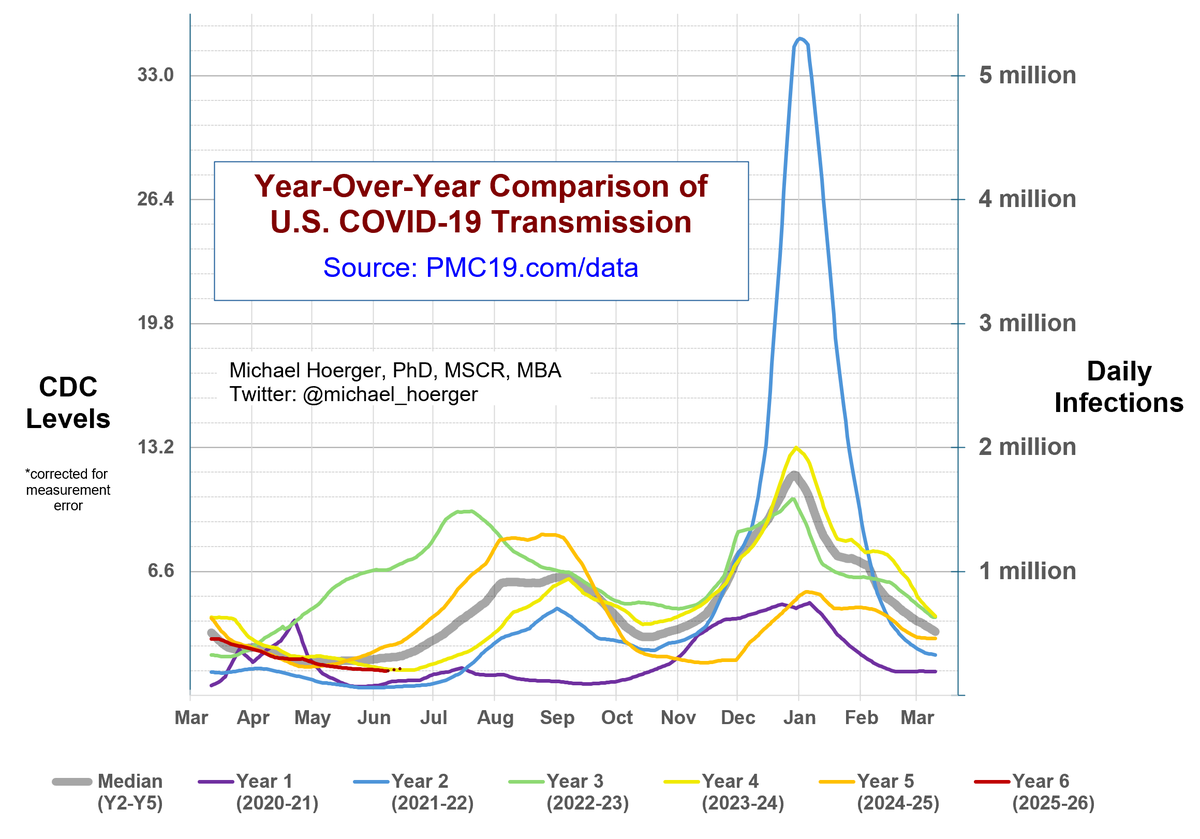1) PMC COVlD Dashboard, July 14, 2025 (U.S.) 🧵
We estimate 1 in 148 Americans are actively infectious. This equates to 2.3 million infections/week, expected to result in >100,000 new #LongCOVID conditions & >800 deaths.
A room of 100 people is a coin toss of an exposure.
We estimate 1 in 148 Americans are actively infectious. This equates to 2.3 million infections/week, expected to result in >100,000 new #LongCOVID conditions & >800 deaths.
A room of 100 people is a coin toss of an exposure.

2) PMC COVlD Dashboard, July 14, 2025 (U.S.) 🧵
Transmission (red) is closely tracking the path of 2 years ago (yellow). However, the incoming data are spotty. >20% of CDC states have limited/no data, & Biobot hasn't reported in weeks.
Could be MUCH worse or slightly better.
Transmission (red) is closely tracking the path of 2 years ago (yellow). However, the incoming data are spotty. >20% of CDC states have limited/no data, & Biobot hasn't reported in weeks.
Could be MUCH worse or slightly better.

3) PMC COVlD Dashboard, July 14, 2025 (U.S.) 🧵
Our model formalizes the mathematical assumptions in those predictions. If transmission follows what we know in terms of how waves grow or slow generally and historical patterns, this is what we'd expect.
The spottiness of the current real-time data reduce precision substantially. Retroactive corrections can make the forecast jump around from better to worse from one week to the next. Expect the worst. Hope for the best.
Our model formalizes the mathematical assumptions in those predictions. If transmission follows what we know in terms of how waves grow or slow generally and historical patterns, this is what we'd expect.
The spottiness of the current real-time data reduce precision substantially. Retroactive corrections can make the forecast jump around from better to worse from one week to the next. Expect the worst. Hope for the best.

4) PMC COVlD Dashboard, July 14, 2025 (U.S.) 🧵
Although many speak of the wave in the future tense, several regions are presently surging.
Transmission is "high" in Alaska, Hawai'i, Florida, & Mississippi. "High" means at least an estimated 1 in 75 infectious.
Although many speak of the wave in the future tense, several regions are presently surging.
Transmission is "high" in Alaska, Hawai'i, Florida, & Mississippi. "High" means at least an estimated 1 in 75 infectious.

5) PMC COVlD Dashboard, July 14, 2025 (U.S.) 🧵
Hawai'i, for example, has been surging for weeks.

Hawai'i, for example, has been surging for weeks.
https://x.com/michael_hoerger/status/1944513289352028198

6) PMC COVlD Dashboard, July 14, 2025 (U.S.) 🧵
The Bay Area of California is surging. Any dark red "very high" transmission region has an estimate of at least 1 in 40 actively infectious.
In a room of 12, you're talking a 1-in-4 chance of exposure.
The Bay Area of California is surging. Any dark red "very high" transmission region has an estimate of at least 1 in 40 actively infectious.
In a room of 12, you're talking a 1-in-4 chance of exposure.
https://x.com/michael_hoerger/status/1944609850064773631
7) PMC COVlD Dashboard, July 14, 2025 (U.S.) 🧵
Note, the CDC "restandardizes," "cleans," or improves the accuracy of its estimates each week and with big updates on Jan 1 and July 1.
This is all normal stuff, but you may notice the PMC multiplier shifted down a little more (a stat we use in converting wastewater levels to case estimates). Some of the left-side axes on various graphs have been updated too.
The CDC used to have a banner noting the Jan/Jul 1 thing year-round. It was misunderstood and even used by disinformation artists to try to portray wastewater data poorly.
Amid many negative changes to federal websites the past several months, the CDC C19 wastewater pages have improved in a few minor areas, especially getting rid of things like that banner that just confused people.
Note, the CDC "restandardizes," "cleans," or improves the accuracy of its estimates each week and with big updates on Jan 1 and July 1.
This is all normal stuff, but you may notice the PMC multiplier shifted down a little more (a stat we use in converting wastewater levels to case estimates). Some of the left-side axes on various graphs have been updated too.
The CDC used to have a banner noting the Jan/Jul 1 thing year-round. It was misunderstood and even used by disinformation artists to try to portray wastewater data poorly.
Amid many negative changes to federal websites the past several months, the CDC C19 wastewater pages have improved in a few minor areas, especially getting rid of things like that banner that just confused people.

8) PMC COVlD Dashboard, July 14, 2025 (U.S.) 🧵
That's all pretty technical stuff in the analytic weeds, but the update essentially means national levels didn't get as low as the CDC had previously estimated.
Some "big accounts" have downplayed summer transmission. They are often more generalists and are not deep in these data. I noted previously the lull levels would likely get corrected upward, and this was in fact correct. Compare the most recent report versus 2 weeks ago.
See how the black line doesn't go as low now. You might have to zoom in to see it. It may seem small, but it had the effect of increasing 2025 infections (through June 21) by about 9 million.
That's all pretty technical stuff in the analytic weeds, but the update essentially means national levels didn't get as low as the CDC had previously estimated.
Some "big accounts" have downplayed summer transmission. They are often more generalists and are not deep in these data. I noted previously the lull levels would likely get corrected upward, and this was in fact correct. Compare the most recent report versus 2 weeks ago.
See how the black line doesn't go as low now. You might have to zoom in to see it. It may seem small, but it had the effect of increasing 2025 infections (through June 21) by about 9 million.

9) PMC COVlD Dashboard, July 14, 2025 (U.S.) 🧵
The COVID reporting delays and corrections and significant geographic variation can make it challenging to know one's local situation.
These resource may help:
pmc19.com/data/index.php…
The COVID reporting delays and corrections and significant geographic variation can make it challenging to know one's local situation.
These resource may help:
pmc19.com/data/index.php…

10) PMC COVlD Dashboard, July 14, 2025 (U.S.) 🧵
We have also added an extensive repository to worldwide COVID surveillance data trackers.
We have also added an extensive repository to worldwide COVID surveillance data trackers.
https://x.com/michael_hoerger/status/1940262075068301339
11) PMC COVlD Dashboard, July 14, 2025 (U.S.) 🧵
Find the complete PMC dashboard at pmc19.com/data
Localized data: pmc19.com/data/index.php…
Worldwide data:
pmc19.com/data/index.php…
Please improve and share info across platforms. 🙏
Find the complete PMC dashboard at pmc19.com/data
Localized data: pmc19.com/data/index.php…
Worldwide data:
pmc19.com/data/index.php…
Please improve and share info across platforms. 🙏

• • •
Missing some Tweet in this thread? You can try to
force a refresh


